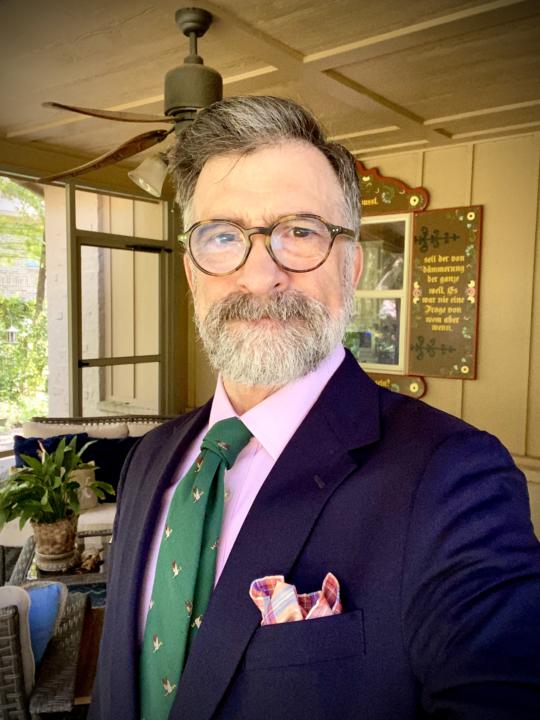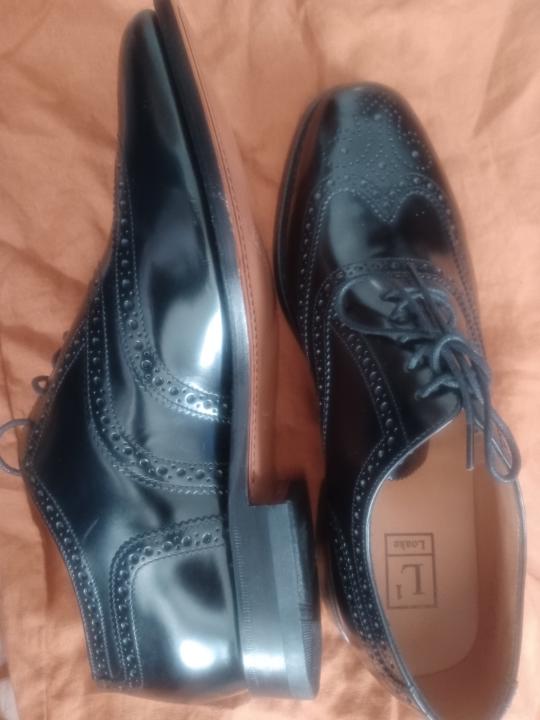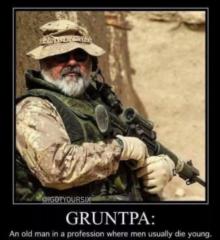
Write something
Pinned
The First 50
In May I started my weight loss at 323lbs. I told my wife that after I lost 50 lbs I was going to have some pizza. Well Tuesday of this week I officially hit that first 50lb mark and we just got done hosting the kids and the grandkids and some friends over for pizza. It was a lot of fun, but I think I realized that I don’t miss the pizza as much as I thought I did. Now I need to figure out how to celebrate the next 50lb loss.
Pinned
Suit and ties
I grew up without a grandfather and a father so ive never worn a suit or tied a tie. But i am curious about it now that i have seen most of you guys wearing them and finding the right styles. Id like to know where you get them from?
Pinned
Introduce Yourself (ALL Intros HERE Please!)
OK, so by introducing yourself you are guaranteed to get to level 2 - it's really that easy and I LOVE learning more about the cool people in this group. Feel free to share where you're from, why you're here, what you do for a living, and what you like about style. Are you a watch guy, suit guy, fragrance guy, or maybe just getting started? Have fun here!

Rumination on style
Firstly let me get the OOTD out of the way in case someone wants to click through and is only interested in an outfit: - HSM Navy blazer one step down from a suit - CT pink shirt (one of three basic conservative colors other two blue and white) - Ferrel Reed wool challis club tie - Harold’s Khaki pants (one step down from grey) - Pendleton socks - Cole Hahn Waxhide loafers - Borealis dive watch - Silk pocket square This basic Classic Timeless outfit was built from the pink shirt out. As I’ve said many times pink, blue and white are the three most basic and conservative colors in men’s shirts in that they are virtually interchangeable with outfits and thus one can conserve a lot of money by owning at least these three colors and perhaps only own these three of starting out. { stop reading here unless your glutton for punishment} But several discourses with brothers here got me thinking about style or better yet different categories of styles of clothing. From my perspective there are 3 basic styles and one non Style that I will term fashion: 1. Classic Timeless Menswear (CTM). Within this style many guys get what is actually in fashion mixed up with style and use somewhat meaningless terms like preppy, and old money. CTM simply means it’s proven, and it’s timeless. Examples include buttondowns oxfords, penny loafers, suspenders, pleates, and all the classic suit fabrics and patterns from solid wool suits to herringbones to barley corn tweeds to corduroy to madras etc etc. it can be a CTM dressed up suit down to tweed or CTM dressed down (swim trunks up to a Barracuda jacket, polo shirt, topsiders, even a motorcycle leather jacket and jeans and a Henley can fit in this category). There are however regional and even international versions of CTM. For example CTM of Savile Row London varies quite a bit from Milan Italy and again from New Haven Connecticut (although they borrow elements from each other). Then in the US CTM varies from NEW haven Connecticut to Charleston, SC to Chicago to LA to Dallas Texas. (This is where some of the preppy nomenclature gets confused). Within CTM British country differs from city or (Town wear). The bottom line is that CTM is an amalgamation of trends (some fashion that endure) that make up style. Here is the test: if your picture was taken in black and white photography one couldn’t tell if the photo was taken 1945 or 2025 or any time in between. The garment should wear out long before the style has. 2. The next style is traditional. While the previously mentioned CTM certainly contains traditional aspects, this is different and involves a more geographical base. Think a full traditional kilted Scotsman in the Prince Charlie jacket and full kilt hose and kilt pin and lace up brogues etc. Or a US cowboy replete with 3x beaver Stetson, western yolk short boot cut wranglers and pair of custom made boots. Or in other parts of the world this may involve a sarong. Or the Cuban Guayabera shirt, or the batik print shirt or a madras shirt (each of these have morphed into being included with in CTM thanks to innovative retailers at the time from the NE part of the US like Brooks Brothers established in 1818 and Orvis 1856). There are many more examples I am leaving out here. There is a costume version of traditional I will save for the next style 3. Eclectic. This style is like Bruce Lee’s Jeet Kwon Do. The martial art form that is an anti martial art form. The style of no style. BUT IT IS INTENTIONAL. Mentioned earlier was the costume version of traditional. So when I wear a camo kilt with a silk Nat Nast embroidered mermaid shirt on stage with shamrock socks and green Lacoste replete with aligator shoes- yea I know it’s not traditional Scottish attire 🥸. Or a guy wears a nine yard traditional kilt with a hand sewn undyed shirt and hand sewn moccasins like the original kilts looked in the 18th century this is as much a costume as what I am wearing. Any time a guy dresses in 19th century Victorian wear this is not Classic timeless menswear but rather an expression of very classic menswear- one might question its timelessness. In other words-has the fashion trend of attached collars rendered the removable collar obsolete? Has the “leisure suit” (not the 70s disco coat - but what we wear today) rendered the frock coat obsolete. That doesn’t mean it’s not cool that guys dress this way. It merely means that in my eyes I would certainly call this style eclectic. Another example is the guy who borrows pieces of clothing from multiple eras and styles and mixes them. This I find fantastic and perhaps the most authentic personal style. We used to have a guy in this community (Mex) who would wear red spats with a red fedora and a red vest and a pocket watch. Loved it. Like wise when my friend @John Witvoet wears his ten gallon hat with a tweed coat and tattersall shirt and a woven silk grenadine in a solid color-eclectic is the only way to describe this. John does this beautifully whereas most of us would look like a homeless guy if we were attempting it. He has amalgamated these styles with a great deal of intention and authenticity. 👍🏼John this is the true essence of personal style on par with innovation of a steve McQueen or a rock star like Mick Jagger. 4. Fashion (the non style) probably only one out of a thousand (or perhaps 1/10,000) attempts at fashion becomes Classic Timeless Menswear style. Examples include wearing a shirt designed for riding sport ponies (the game of polo) introduced the button down Oxford.; Casual peasant shoes worn by Norwegians introduced the penny loafer. (Weejun); Cool brightly hand dyed shirts from India introduced the madras shirt; higher ankled suede boots worn by British soldiers with shorts in sandy climates introduced the Clark’s Wallabee and desert boot. Each of these above were bold fashion statements when worn by college students about a hundred years ago. But Fashion is actually the antithesis of style in most cases. It’s an easy thing to test. Look at pictures of your clothes in the 1970s - 1990s. If you are in some polyester atrocity or some line green suit that hangs like a 1970 leisure suit then that is clearly fashion. Again the test is the photo test. If your hairstyle isn’t a factor, how quickly can you tell when a photo was taken. Again, a CTM photo shouldn’t give away the decade. If one understands the basics of Fit, Fabric and Function (Antonio’s style system) this should be easy. The problem is many don’t even recognize the oddity of fit as a fashion versus style issue. The oversized suits of the 90s were a fashion issue. The present undersized suit that is too short is a fashion issue. Again-the picture test. This is where the weird terms of preppy or old money confuse guys. What about the guys who thinks that a pair of khakis and a two color striped tie with the back blade out is a “preppy school boy” look. I have ran into this here. WELL. If your perspective for wearing that tie was to be “preppy” and now you are older so you don’t wear that look anymore- Ask yourself the question. Did I wear it back when to fit into my peers fashion or because I recognized the 100 year timelessness of the blazer and khaki and rep tie (irrespective of the tie blade (geez). If it’s the former, then I submit that while you looked infinitely better-were you really any different than the kid with his pants halfway down his ass crack with an oversized jersey and a sideways trucker cap? In other words was timeless style intentionality involved? Like I’ve said ad nauseum. Style is never “out of” whereas fashion is “out of” the second it’s in. Snap snap snap wake up my ruminations are over. 🥱😴💤

Filling a Need
I've been in need of a pair of black shoes . I was watching the 'Chap' gush over Loakes and had to have a pair. He loves 1880s. I searched ebay for a while but nothing until last week. What seemed to be a brand-new pair of wingtips (my favorite) but in L1 edition which is a lower step from the 1880s (still goodyear welded). New, the L1 is above $350. These were listed at $180. I offered $100. I think maybe they were worn once for 5 minutes because of a slight scuff on the sole of one. They fit great. Can't wait to care for them and, of course, show them off when I wear them!

1-30 of 22,731

skool.com/rmrs
Discover the foundations of timeless style, classic grooming, and how to be a better man. Members get access to professional training & expert advice
Powered by








